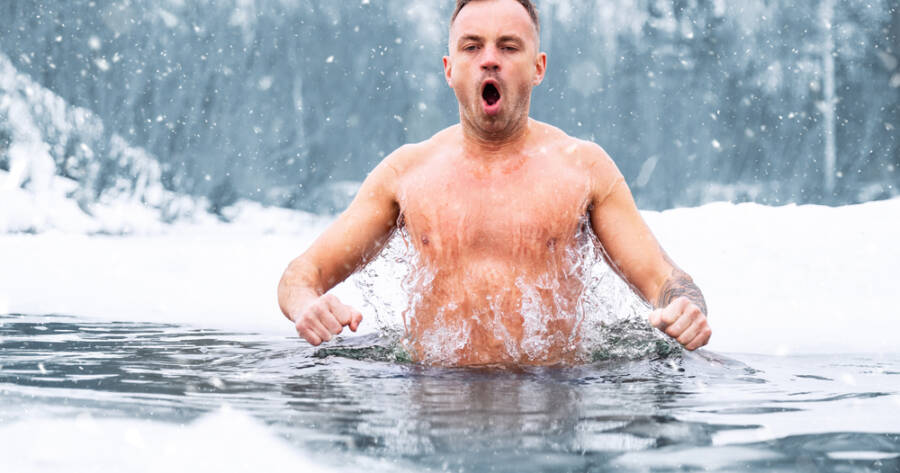Cold exposure practices like ice baths and Wim Hof breathing are gaining traction for their ability to boost physical and mental resilience. Such techniques stimulate circulation, strengthen the nervous system, and may reduce inflammation. For beginners, learning to breathe with control and gradually adapt to the cold can build not just stress tolerance, but also a deeper sense of focus, clarity, and connection to the body’s natural strength.
What Is Cold Exposure and Why Does It Matter?
Cold exposure involves deliberately putting your body in a cold environment, such as an ice bath, cold shower, or outdoor chill. It activates your nervous system and helps build resilience to stress. When your body adjusts to the cold, it adapts in ways that can improve circulation, reduce inflammation, and support your mental well-being.
One popular method of cold exposure is the ice bath—where you sit in cold water, typically between 39°F and 59°F, for a few minutes. The key is to build up gradually, giving your body time to adapt without overdoing it. Another key element is breathing, and that’s where the Wim Hof Method comes in.
Wim Hof, also known as “The Iceman,” developed a system that combines deep breathing, cold exposure, and mental focus. It’s helped thousands of people feel more energized, grounded, and calm under pressure. Beginners can start with just the breathing techniques before trying full cold immersion.
Starting with Wim Hof Breathing
Wim Hof breathing is a controlled breathing technique designed to improve oxygen flow, calm your mind, and prepare your body for the stress of cold exposure. It’s a good place to start if you’re new to the practice and want to experience the benefits without jumping into freezing water right away.
Here’s a simple version: take 30 to 40 deep breaths—inhale fully, then exhale naturally. After the last breath, hold your breath for as long as you comfortably can. Once you feel the urge to breathe again, take a deep breath in and hold it for 10 to 15 seconds before exhaling. Repeat this cycle two to three times.
This breathing method increases oxygen levels in your body, helping you feel more alert and focused. Many people report feeling a sense of calm or even euphoria after just a few rounds. Practicing it regularly can help train your nervous system to stay relaxed during stressful situations—like stepping into an ice bath.
Taking Your First Ice Bath
If you’re ready to try an ice bath, it’s important to go slowly and prepare yourself both mentally and physically. Start with cold showers to get used to lower temperatures. Once you’re comfortable, you can move on to a tub with cold water and a few ice cubes. Over time, you can lower the temperature and increase the duration.
When entering an ice bath, focus on your breathing. Try to stay calm, breathe slowly, and avoid holding your breath. Start with just one to two minutes, and listen to your body. Some discomfort is normal at first, but sharp pain or dizziness means it’s time to get out.
Always have someone nearby if it’s your first time, and make sure you warm up gradually afterward. Use a towel, warm clothes, or light movement—not hot water—to bring your body temperature back to normal.
With regular practice, your body becomes more efficient at handling cold stress. Over time, this can lead to better stress tolerance in everyday life, along with physical benefits like reduced muscle soreness and improved recovery.
Staying Safe and Building a Routine
Safety is the most important part of cold exposure. Never practice Wim Hof breathing in water or while driving, as it can cause lightheadedness. Do your breathing in a safe, quiet place where you can sit or lie down comfortably.
As you get more familiar with the practice, consider building a weekly routine. Some people do cold exposure every morning to boost their energy, while others use it after workouts for recovery. The most important thing is consistency—start small, go slow, and build up with time.
Combining breathing with cold exposure helps you train your mind and body to stay calm in the face of stress. Many people say it’s not just about the cold—it’s about what you learn from the experience. You become more present, more focused, and more in tune with your body.
Step Into the Cold With Confidence
Ice baths and Wim Hof breathing might seem intimidating at first, but they’re actually simple tools that anyone can learn. With patience and the right mindset, you can begin to build physical resilience and mental strength in just a few minutes a day.
You don’t need fancy gear or extreme willpower to get started. All you need is curiosity, consistency, and a willingness to step outside your comfort zone. The cold may be challenging, but what you gain in clarity, calm, and confidence makes it well worth the effort.

